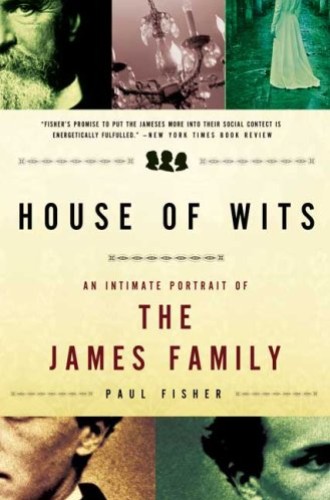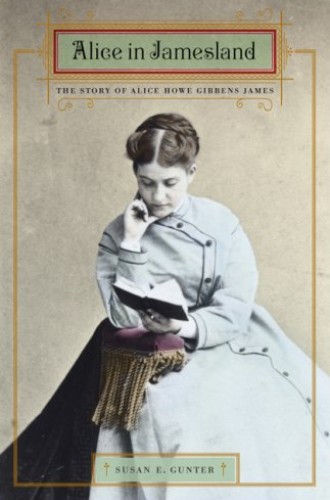Jamesian analysis
When I read a biography, I usually find myself poking, like a nosy houseguest, into shadowy corners that the author, for whatever reason, left unlit. One can find the facts of a life—birth and death dates, education, major accomplishments—anywhere, instantly. In a biography, I want to come to know the subject slowly, as his or her contemporaries might have: in glimpses, through sidelong moments, by the intimate, shaping connections he or she made. I want to know about the spouse, the friend, the child—not as accessory half-people but as multidimensional beings with their own stories to tell. Seeing how their own contours complemented or grated against those of the main figure reveals much human truth about the whole community.
In these two books, fans of William and Henry James have two opportunities to get closer to these estimable brothers—already the subjects of many bio graphical studies—by watching them in relation to parents, siblings, partners and love interests, and children.
The books survey much of the same landscape, although House of Wits aims to put the James clan—father Henry Sr., mother Mary, William, Henry Jr., Robert son (Bob), Garth Wilkinson (Wilkie) and “sister Alice”—in the center of the frame, while Alice in Jamesland principally traces the story of William’s wife, “Mrs. Alice,” from her tragic childhood to her marriage to her arrival, after William’s and Henry’s deaths, as a tribal matriarch, the guardian of Jamesian reputation.
The books share the goal of situating the James family meaningfully in cultural context. Gunter claims to give “greater historical resonance” to William and Mrs. Alice by letting their lives play out “against the backdrop of larger cultural and historical events,” and Fisher forecasts a similar project, with the dubious goal of showing that the Jameses were prototypical of contemporary American families. Yet are the Jameses—William, the father of modern psychology, and Henry, the master of psychological fiction—not already resonant enough? Does the punctuation of their life stories by mere mentions of events such as the Gold Rush, Queen Victoria’s marriage and funeral, and World War I really add much to our understanding of their life and work?
Any reasonably curious reader can set these figures and their lives against this historical background and come up with as much resonance as either of these books does, particularly considering that many of the connections Fisher makes are just too attenuated to be meaningful. Pivotal connections that Gunter explores, however—the phenomenon of spiritualism, Mrs. Alice’s commitment to Swedenborgian thought, middle-class transatlantic culture—do light quiet corners for her readers. She makes a real contribution to our understanding of both William and Henry.
The asymmetries of these two books come to rest, of course, on the pair of famous brothers. Through Gunter’s excerpts of William and Mrs. Alice’s letters, readers see the great philosopher’s petulance, successes, obsessive worries, flirtations, tempers and tendernesses—and Alice’s mostly stalwart intellectual and emotional support of him through it all. William often comes off looking petty, sometimes cruel and inveterately flirtatious if not unfaithful.
Mrs. Alice and Henry constitute the most interesting pair in both books—the famous best-selling author was surprisingly empathetic toward Alice’s troubles as the wife of his difficult brother, the mother of his cherished nephews and nieces, and an ideal, enthusiastic reader of his fiction. More doting than his brother, Henry actively promoted her enjoyment of life’s material and intellectual comforts. Henry wrote to Mrs. Alice, as she worked to conserve William’s strength for the Gifford Lectures (which would become The Varieties of Religious Experience), “It is like driving a pig to the fair: sometimes he gets round & behind you & you have to bring him back. But at last to the fair you do get him—& meanwhile, all the time, you are on the road to it.”
Taking seriously their “imaginative” intimacy, Gunter also explores an aging Henry’s great reliance on Mrs. Alice and her children—particularly Harry, his namesake and their oldest, and Peggy, William’s only daughter. For her part, Mrs. Alice comes off as witty, intelligent, real—a weight-conscious clothes shopper, ambitious for and protective of her husband (even after his death), an elitist with some radical leanings, a proud and worried mother hen, eminently tradition-bound in some ways and daring in others.
House of Wits presents an uneven account that emphasizes Henry, and to some extent sister Alice, but neglects William and especially the rest of the family. Henry Sr. and Mary openly favored their first two sons over their three subsequent children, reducing the three to dim satellites of the family’s two stars; Fisher follows their lead, but also unaccountably elevates Henry above William. Strangely, however, he seems to harbor some distaste for his main figure. He is, most strikingly, obtuse about Henry’s probable homosexuality, a stance that is all the more frustrating because he spends so much time discussing Henry’s infatuations—with young men, matronly women and rebellious characters male and female.
Gunter, by refreshing contrast, seems to assume that Henry loved men deeply but secretly, vexedly, and goes on to explore more knowable and revealing parts of his life. Gunter describes Henry as a man who “loved any number of young men passionately” but nevertheless suffered great loneliness and therefore depended mightily on Mrs. Alice’s friendship and care. Fisher finally settles on the late-20th-century critical category of queer to describe not only Henry’s sexuality but also his and William’s lives more generally, but this move comes late in the book and is accompanied by off-color jabs, so the term hardly helps readers interpret what they have already read.
My scholarly interest in women’s religious lives drives me toward a greater general appreciation of Gunter’s book. Although Fisher more helpfully details the circumstances surrounding the composition, publication, dissemination and significance of sister Alice’s journal, now a feminist classic, Gunter opens up Mrs. Alice’s religious commitments and the effect her Swedenborgian beliefs had on William’s life and philosophy. As Gunter vividly shows, Mrs. Alice was a model for years of “healthy-mindedness,” serving as “a steady emotional counterweight and intellectual” companion to William. She believed without question in the immortality of the soul and insisted that William accept at least the fact of God’s existence. Recognizing the wisdom in her stance, even if he never quite came to share it, he told her, “I have really to take up with a new God, your God, who really is very different from my old one, and it is no easy thing to do right off. But with you for his prophet, what god would not prevail in the long run.”
This thread of Gunter’s account stands out all the more in the context of the Jameses’ relationship, in which William did what he wanted while Mrs. Alice stood ready to advise whenever he turned up seeking her guidance. Grounded in her faith, she kept the best image of William always in mind and acted from that; perhaps her steadfastness, more than anything else, helped persuade him that she was on to something. “It might be worthwhile,” William wrote in The Will to Believe, “to take a chance on the religious hypothesis in a universe where there might be an anthropomorphic deity.” The Gifford Lectures, too, became his attempt to share his belief that “although all the special manifestations of religion may have been absurd (I mean its creeds and theories) yet the life of it as a whole is mankind’s most important function.”
Alice in Jamesland interprets William James’s Gifford Lectures as “his own act of religion, an act Alice had encouraged since their courtship.” Gunter succeeds in bringing her important influence to light.






